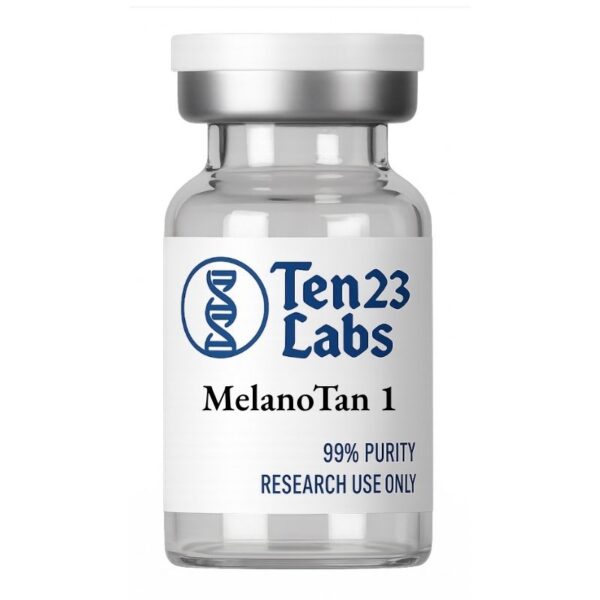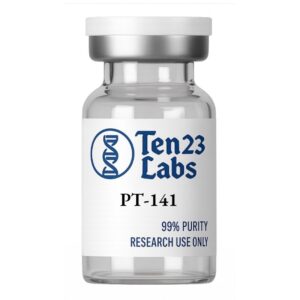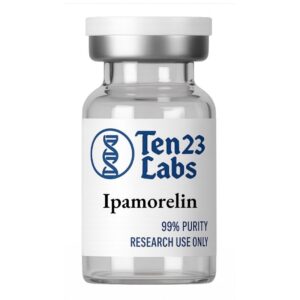🧬 Melanotan I (Afamelanotide) – Research Overview
0. Category:
Skin & Aesthetic, Photoprotection, Anti-Aging / Longevity
1. Primary Research Use:
Melanotan I, known scientifically as Afamelanotide, is primarily researched for its ability to stimulate melanin production, leading to increased skin pigmentation. It has been studied for its potential to provide photoprotection in individuals with conditions like erythropoietic protoporphyria (EPP), a rare genetic disorder causing severe sensitivity to sunlight.(Healthline)
2. Simple Analogy:
Think of Melanotan I as a “sunlight shield” for the skin—it encourages the body to produce more melanin, the pigment responsible for skin color, which can offer some protection against UV radiation.
3. What It Is (Chemical Summary):
Melanotan I is a synthetic analog of the naturally occurring peptide hormone α-melanocyte-stimulating hormone (α-MSH). It binds to melanocortin receptors, particularly MC1R, stimulating melanin production in the skin. Afamelanotide is the pharmaceutical name for Melanotan I and is administered via subcutaneous implantation.(Wikipedia)
4. Best Suited For:
Research involving Melanotan I is best suited for:
- Investigating treatments for photosensitivity disorders like EPP.
- Exploring photoprotective strategies in individuals with high sensitivity to UV radiation.
- Studying melanin production pathways and their effects on skin pigmentation.(Regenerative Medicine)
5. Not Recommended For / Caution In Research With:
Caution is advised when researching Melanotan I in individuals with:
- A history of melanoma or other skin cancers, due to potential effects on melanocyte activity.
- Pregnancy or breastfeeding, as safety data is limited.
- Liver or kidney impairments, since metabolism and excretion pathways may be affected.
6. Synergistic Peptide Stacks:
While Melanotan I is typically studied independently, it may be researched alongside:
- Nicotinamide (Vitamin B3): Explored for its role in DNA repair and potential photoprotective effects.
- Antioxidants (e.g., Vitamin E, Vitamin C): Studied for their ability to mitigate oxidative stress from UV exposure.
7. Common Dosing Guidelines (Research Use):
Starting Dose (Day 1–3):
-
0.25mg (250mcg) per day
= ~7.5 units (on an insulin syringe)
Loading Phase (Day 4–14):
-
0.5mg (500mcg) per day
= ~15 units -
Continue daily or every other day until desired base tan begins to form. Some protocols suggest this can go for 2 to 3 weeks, depending on skin type.
Maintenance Phase:
-
0.5mg – 1mg 1 to 3 times per week, depending on how well pigmentation is holding.
= ~15–30 units per dose
| Dose (mg) | Syringe Units (approx) |
|---|---|
| 0.25mg | 7.5 units |
| 0.5mg | 15 units |
| 1.0mg | 30 units |
⚠️ Important Notes:
-
Researchers should always start low to gauge sensitivity.
-
UV exposure (sun or tanning bed) after administration enhances melanin production, though MT-1 is less UV-dependent than MT-2.
-
Store reconstituted peptide in the refrigerator and use within 30 days.
-
As with all research chemicals, this is not for human consumption unless under medical supervision in approved clinical settings.
8. Cycling Information:
Research protocols often involve implantation every two months, with the duration depending on study objectives. Continuous monitoring for efficacy and adverse effects is essential.
9. Similar Compounds & Comparison Chart:
| Compound | Duration | Mechanism of Action | Dosing Frequency | Notes |
|---|---|---|---|---|
| Melanotan I | Long (weeks) | MC1R agonist; stimulates melanin | Every 60 days | Used in photoprotection research |
| Melanotan II | Short (hours) | Non-selective melanocortin agonist | Variable | Associated with more side effects |
| Afamelanotide | Long (weeks) | Synthetic α-MSH analog | Every 60 days | FDA-approved for EPP treatment |
10. Method of Administration:
Melanotan I is administered via subcutaneous implantation, allowing for sustained release over time. This method ensures consistent plasma levels and prolonged effects.
11. Regulatory Status (FDA Approval):
Afamelanotide (Melanotan I) is approved by the FDA under the brand name Scenesse for the treatment of erythropoietic protoporphyria (EPP). It is also approved in the European Union and Australia for similar indications.(Healthline)
12. Legal Disclaimer:
All information provided is for educational and research purposes only. Melanotan I should be used in compliance with applicable laws and regulations. It is essential to consult with appropriate regulatory bodies and ethics committees before initiating research involving this compound.







Reviews
There are no reviews yet.